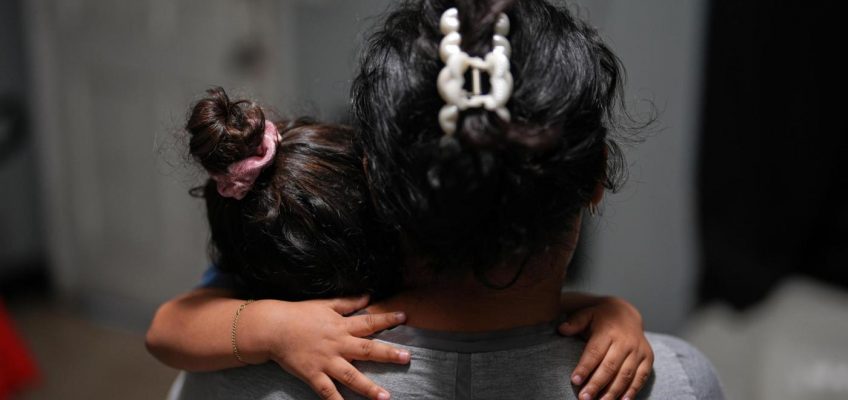By Stephanie Armour, Amanda Seitz, KFF Health News
Maddy Olcott plans to start a career once she graduates from college. But the junior at the State University of New York-Purchase College is so far not planning to start a family — even with the Trump administration dangling inducements like thousand-dollar “baby bonuses” or cheaper infertility drugs.
Related Articles
Senate poised to reject extension of health care subsidies as costs rise for many
Oreo is bringing zero-sugar cookies to the US
Botulism outbreak sickens more than 50 babies and expands to all ByHeart products
Feds promised ‘radical transparency’ but are withholding rural health fund applications
FDA opens safety review of injectable RSV drugs approved for babies and toddlers
“Our country wants us to be birthing machines, but they’re cutting what resources there already are,” said Olcott, 20. “And a $1,000 baby bonus? It’s low-key like, what, bro? That wouldn’t even cover my month’s rent.”
The Trump administration wants Americans to have more babies, and the federal government is debuting policy initiatives to reverse the falling U.S. fertility rate. In mid-October, the White House unveiled a plan to increase access to in vitro fertilization treatment. President Donald Trump has heralded such initiatives, calling himself “the fertilization president.”
But reproductive rights groups and other advocacy organizations say these efforts to buttress the birth rate don’t make up for broader administration priorities aimed at cutting federal programs such as Medicaid, its related Children’s Health Insurance Program, and other initiatives that support women and children. The pro-family focus, they say, isn’t just about boosting procreation. Instead, they say, it’s being weaponized to push a conservative agenda that threatens women’s health, reproductive rights, and labor force participation.
Some predict these efforts could deter parenthood and lead to increases in maternal mortality.
“The religious right wants more white Christian babies and is trying to curtail women’s reproductive freedom in order to achieve that aim,” said Marian Starkey, a spokesperson for Population Connection, a nonprofit that promotes population stabilization through increased access to birth control and abortion. “The real danger is the constant whittling down of reproductive rights.”
The White House did not respond to repeated interview requests.
A slate of federal programs that have long helped women and children are also being targeted by Trump and Cabinet members who say they champion pronatalist policies.
Medicaid work requirements, for instance, put in place by the Republicans’ One Big Beautiful Bill Act, a budget law enacted in July, will lead to extra paperwork and other requirements that, according to the Congressional Budget Office, will cause millions of eligible enrollees to lose coverage. Medicaid covers more than 4 in 10 births in the U.S.
The measure also cuts federal funding for a national program that provides monthly food benefits. Almost 40% of recipients in fiscal 2023 were children.
GOP spending cuts and staffing freezes have hampered Head Start, a federal education program that provides day care and preschool for young, low-income children, even as U.S. adults implore the government to curtail ballooning child care costs.
And the GOP halted Medicaid funding to Planned Parenthood of America for one year because it provides abortion services, forcing roughly 50 clinics around the country to close since the beginning of 2025. Planned Parenthood provides a wide range of women’s health services, from wellness exams to breast cancer screenings and initial prenatal care.
Groups that advocate for women’s health and reproductive rights say the actions by the administration and congressional Republicans to attack these programs are making it harder for families to get the support and medical care they need.
“There is a lot of rhetoric about who is worthy of public assistance, and to many policymakers, it’s not the single mother,” said Allyson Crays, a public health law and policy analyst at the Milken Institute School of Public Health at George Washington University.
The pronatalist perspective generally supports government intervention to encourage procreation and is rooted in a belief that modern culture has failed to celebrate the nuclear family. The movement’s supporters also say policies to encourage childbearing are an economic necessity.
A Declining Birth Rate
The national birth rate has largely been on a downward trajectory since 2007, with the number of births declining by an average 2% per year from 2015 through 2020, according to the Centers for Disease Control and Prevention, although the rate has fluctuated since.
The concepts that shape the movement can be found in Project 2025, a political initiative led by the conservative Heritage Foundation that has seen many of its proposals adopted by Trump. The document asserts that children fare best in a “heterosexual, intact marriage.”
“Married men and women are the ideal, natural family structure because all children have a right to be raised by the men and women who conceived them,” it says.
Project 2025 also includes many proposals that critics say aren’t friendly toward women’s health. For instance, it calls for eliminating access to mifepristone, a drug commonly used in abortions as well as in the management of miscarriages, and encourages states to block Planned Parenthood facilities from receiving Medicaid funding.
The “more babies” mantra is being embraced at the highest levels of the federal government.
“I can’t remember any other administration being so tied to the pronatalist movement,” said Brian Dixon, Population Connection’s senior vice president for government and political affairs.
Just days after he was sworn in, Vice President JD Vance declared, “I want more babies in the United States of America.” He has also criticized the decision-making of women and men who opt not to start families.
The White House in October did announce a discount on certain drugs used in IVF treatments through TrumpRx, a yet-to-debut government website that aims to connect consumers with lower-priced drugs. Mehmet Oz, who heads Medicare and Medicaid, heralded a possible future of “Trump babies,” resulting from the lower-priced infertility drugs.
The administration also announced it would encourage employers to move to a new model for offering fertility benefits as a stand-alone option in which employees can enroll. But that is far from Trump’s earlier pledge to make infertility treatments free and may not be enough to overcome other long-term financial worries that often guide decisions about whether to have children.
Angel Albring, a mother of six, says her dream of having a big family always hinged on her ability to work and avoid child care costs. Her career as a freelance writer enabled her to do so while still contributing to the family’s income, working during nap times and at night, while the rest of her household slept.
“The whole thing of ‘sleep when the baby sleeps’ never applied to me,” Albring said.
Some of her friends, though, aren’t so fortunate. They fear they cannot afford children because of climbing costs for day care, groceries, and housing, she said.
Delivering on ‘Baby Bonuses’?
The Trump administration, meanwhile, has advanced another policy aimed at giving children a future financial boost.
The One Big Beautiful Bill Act establishes a tax-advantaged “Trump account” seeded with $1,000 in federal funds — often called a “baby bonus” — on behalf of every eligible American child. The initial deposits are scheduled to start in 2026 with the federal government automatically opening an account for children born after Dec. 31, 2024, and before Jan. 1, 2029.
Parents could contribute up to $5,000 a year initially to the account, with employers able to annually contribute up to $2,500 of that amount. The accounts reportedly would be vehicles for long-term savings. Details are still being ironed out, but funds could not be withdrawn before the child turns 18. After that, the accounts would likely become traditional IRAs.
On Tuesday, billionaires Michael and Susan Dell of Dell computer fame said they would give $250 to 25 million children age 10 and under in the U.S. The donations will be aimed at encouraging participation in the Trump accounts.
Pronatalism extends to other parts of the federal government, too.
Transportation Secretary Sean Duffy, who has nine children, instructed his department to prioritize federal funds for communities with high marriage and birth rates, though it has not yet announced any projects directly related to the initiative. For a time, the administration considered bestowing national medals on mothers with six or more children.
Except there’s one hitch: Data suggests the policies and programs the Trump administration has proposed won’t necessarily work.
Other countries have offered more robust programs to encourage childbearing and ease parenting but haven’t seen their birth rates go up, noted Michael Geruso, an economist for the University of Texas-Austin who hopes to see the global population increase. Israel, for example, has offered free IVF treatment for roughly three decades, yet its birth rates have stayed statistically stagnant, at just under three children for every woman, he said.
France and Sweden have extensive social safety-net programs to support families, including paid time off and paid paternity and maternity leave, and subsidized child care and health care, but their fertility rates are also falling, said Peggy O’Donnell Heffington, a University of Chicago assistant senior instructional professor in the history department who wrote a book on non-motherhood.
“Nobody yet knows how to avoid depopulation,” Geruso said.
Some point to a different solution to reverse the United States’ declining population: boost immigration to ensure a younger labor force and stronger tax base. The Trump administration, however, is doing the opposite — revoking visas and creating an environment in which immigrants who are in the U.S. legally feel increasingly uncomfortable because of heavy-handed policies, analysts say.
The country’s immigrant population this year fell for the first time since the 1960s, according to a Pew Research Center analysis.
Meanwhile, to critics of the administration, the focus on encouraging childbirth allows the Trump administration and Republicans to sound as if they support families.
“You’re not seeing policies that support families with children,” said Amy Matsui, vice president of income security and child care at the National Women’s Law Center, a nonprofit focused on gender rights. “It’s a white, heterosexual, fundamentalist Christian, two-parent marriage that’s being held up.”
©2025 KFF Health News. Distributed by Tribune Content Agency, LLC.




